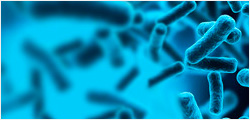GRO-γ/CXCL3, Human
Chemokine (C-X-C motif) ligand 3 (CXCL3) is a small cytokine belonging to the CXC chemokine family that is also known as GRO3 oncogene (GRO3), GRO protein gamma (GROg) and macrophage inflammatory protein-2-beta (MIP2b). CXCL3 controls migration and adhesion of monocytes and mediates its effect on its target cell by interacting with cell surface chemokine receptor CXCR2. It has been shown that CXCL3 regulates the migration of precursors of cerebellar granule neurons toward the internal layers of the cerebellum, during morphogenesis.
| Z02819 | |
|
|
|
| ¥35,443.00 | |
|
|
|
|
|
|
| Ask us a question | |










































